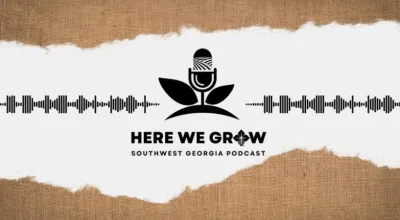
Understanding The Importance of Finances & Record Keeping
Finances and record keeping. They’re not the most exciting parts of farming, but they are powerful pieces you need for a successful loan approval.
But where do you even begin?
The answer is a balance sheet.
In Episode 4 of AgCredit Said It, our hosts sit down with credit analyst Joel Althauser to discuss the perfect recipe for creating a balance sheet. Joel is an expert in all aspects of financials at AgCredit. He’s the guy crunching numbers and looking at spreadsheets so that your account officer can make the best loan decision for you.
Joel says a balance sheet is arguably one of the most important financial documents. “It’s a document where you are recording what you own and what you owe,” explains Joel. “The important part of it is that it is a snapshot in time. It’s a photograph of the financial health of your operation at that given time.”
The Balance Sheet
One basic financial tool your lender will ask for is a balance sheet. Your lender will look at this document to better understand your operation’s finances when you are exploring a loan.
The term balance sheet might not sound like much fun to most people, but Joel explains that this seemingly complicated document can be broken down into two major sections: assets and liabilities.
Assets
Assets are what you own. This could be cash, bank accounts, equipment, real estate, vehicles, or retirement accounts for example.
Liabilities
Liabilities are what you owe. In other words, Joel says this is “what you have borrowed in order to obtain those assets.” This could be loans from financial institutions, individuals or accounts that you have payable to co-ops.
Short-term and Long-term Assets and Liabilities
From here, these two sections can be broken down further into short-term and long-term assets and liabilities. Joel explains that current assets and liabilities are those that have a 12-month life or less. Typically the cash you have on-hand, or as Joel describes it, what you currently have on-hand that you could pay your bills with. In addition to cash, this could be grain inventory, inputs, etc.
“Your lender wants to see if you can meet your obligations that occur in the next 12 months,” says Joel.
On the flip side, you will also want to show your assets and liabilities that are greater than 12 months. These would be the debts that pertain to your assets, such as vehicles, equipment or real estate. Joel says to view this portion of your balance sheet as the long-term outlook on the financial health of your operation.
Accuracy is Key
When it comes to filling out your balance sheet, being as accurate as possible is vital.
Joel shares that it may be human nature to not want to show every dollar you have saved on your balance sheet, but in reality, you don’t want to leave anything off.
Showing your total assets allows your account officer and credit analyst to see your character, or in other words, how you acquire your assets and what you do with your earnings so that they can give you credit for all of your assets.
“The picture has to get painted for us in its entirety in order for us to make sound decisions for an operation,” says Brenna.
One of the best ways to make sure that your balance sheet is accurate, especially when valuing your equipment and vehicles, is to value these assets at current market value. Brenna explains that AgCredit has various tools available to help you look at marketplace value, specifically the Farm Service Agency’s pricing metrics.
Timing is Key, too
You might often hear your account officer talk about a “12/31 year-end balance sheet”. This is a particularly important date to your balance sheet because it should match your tax return that gets completed based on the year that just ended.
“The beginning of December is a great time to sit down and dust off that balance sheet from the year previous,” says Phil. “What did you buy this past year? What loans did you take out? Writing this down helps prep you for the year-end balance sheet you’re going to be getting ready to do.”
Balance Sheets in the Real World
Not only does a balance sheet help your lender better understand your operation, but it also serves as a great guidepost for making decisions about your operation.
For example, Joel says when he was contemplating a combine trade, he referred to his balance sheet.
When looking at the revenue side of his operation, all looked well. But even so, he wanted to take the time to really look at things and see how the year was going to turn out.
And things did turn out well. “But what it gave me was the confidence to say ‘Okay, I can go ahead and make that, and guess what? I may be able to put a little more money down on that machine than I thought I could,’” says Joel.
Year-End Tips
As we wrapped up our conversation, Joel shared some of his best tips for balance sheet success.
His first piece of advice was to start simple. Joel says to start by just making notes for yourself as you go through the year. This will help make completing your balance sheet at the end of the year that much easier.
And his other piece of advice: don’t be afraid to reach out to your account officer and meet for breakfast to go over your balance sheet. “They’ll jump at the chance because the best information we receive from our members is when we sit down as a team and complete that balance sheet together,” says Joel.
Wrapping It All Up
The ins and outs of putting together a balance sheet aren’t one of the most riveting roles of owning a farm, but with an accurate financial understanding of how your operation is doing, your loan officer (and credit analyst behind the scenes) will be able to make the best borrowing decision for your operation in order to determine loan approvals.
We cover a lot of ground about balance sheets in Episode 4 of AgCredit Said It, so be sure to listen for more tips on dishing out a great balance sheet as you approach the end of the year.

























